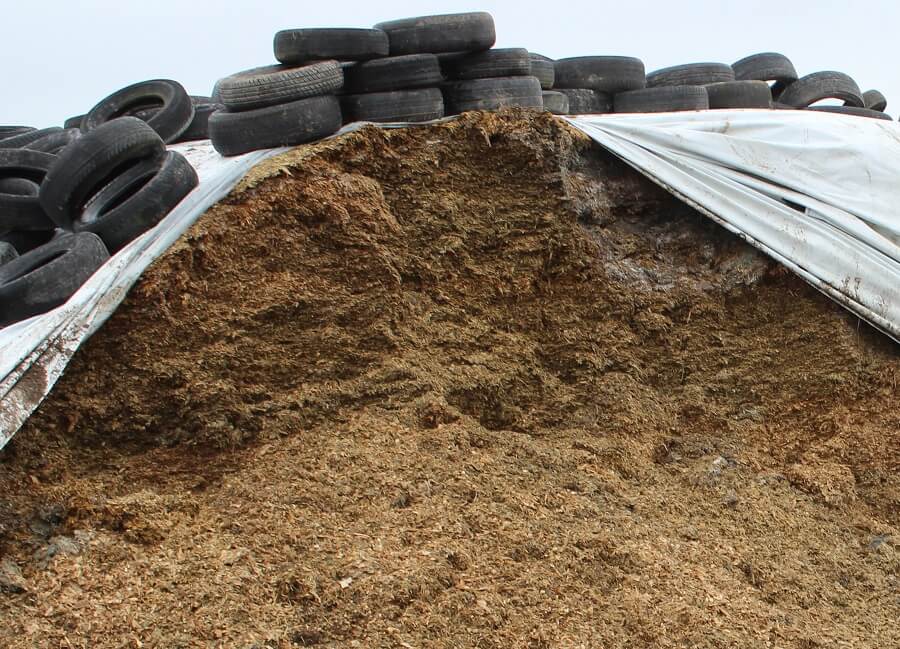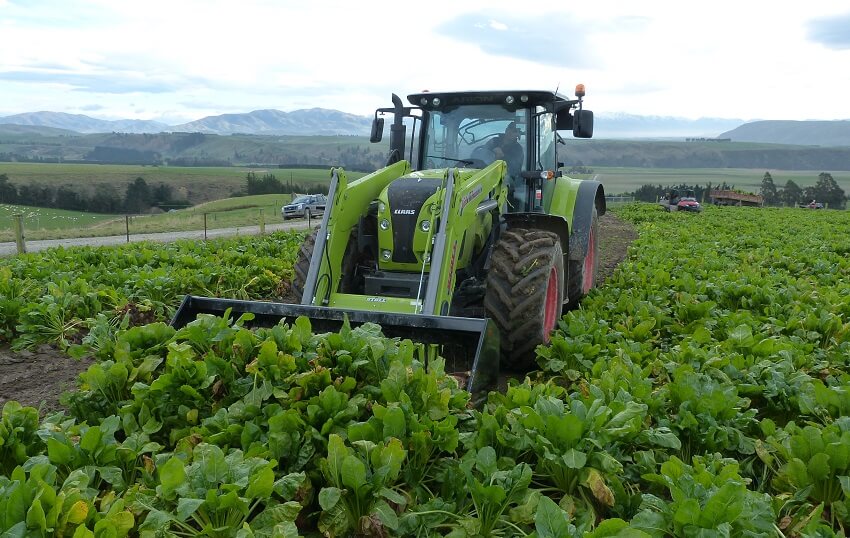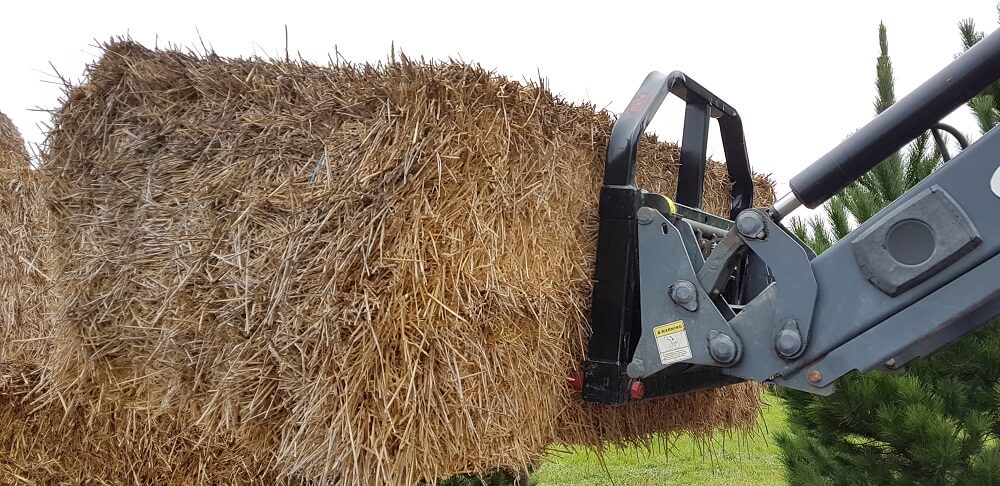
Silage has long been the flagship supplementary feed on Australian and New Zealand dairy farms, with a higher energy value per hectare than hay and a lower cost to grow than many other crops.
It’s also easy to grow, easy to harvest, but also easy to lose all of these benefits if your storage and handling system is not up to spec!
Why worry about silage handling and storage?
When grass is ensiled the sugars are convert into lactic acid which pickles the grass. This ensures the silage can be preserved for extended lengths of time for feeding out in times of feed deficit without losses in feed quality. A well-preserved grass silage at time of feed out can be of similar quality to what it was in pasture at the time of harvest! This helps to point out the importance of proper storage and handling methods.
Maintaining quality and preventing losses in grass silage all comes back to your ability to isolate it from air from the time of harvest to feeding out.
Each time silage is exposed to air the silage heats up as microorganisms use the sugars and protein you preserved through the ensilation process to begin aerobic spoilage, this turns silage into heat energy and results in lost feed value and quality.
Feeding out spoiled and moldy silage is highly advised against, doing so can cause the following issues:
Including spoiled silage in the feed ration at rates as little as 5% can have serious effects on your stock as described above.
.jpg)
Preventing dry matter loss and spoilage in stack silage all comes back to your stack face management. It has been advised that you open the stack at the opposite end of any prevailing winds as this can help to prevent air penetrating into the stack under the cover. Read the below pointers for some highly effective stack management tips:
Principles for preventing dry matter losses and spoilage in wrapped silage bales (bailage) are largely the same as for stack silage, isolate from air!
Once the silage bales are wrapped ensure they are stored in a secure area free from potential damage. Store on the flat end of the bale and do not stack more than 3 high to prevent bales squashing under their weight and rupturing the wrap.
For more tips on effective bale handling check out the blog: How to stack and handle silage bales
It is also advised you always feed out whole bales or at least within 48 hours before secondary fermentation begins to occur. Some further tips to maintaining feed quality & preventing spoilage in wrapped bales:
Always use a high quality wrapped bale handler to handle your wrapped bales, see how much $ worth of feed value these two farmers have saved by using the Rata Bale Clamp: The true value of a wrapped bale handler

Fodder Beet has boomed in popularity as a supplementary feed among dairy farms in New Zealand, particularly in the South Island and some parts of the Central North Island such as the Waikato and Taranaki, some Australian dairy farmers in Victoria & Tasmania are beginning to include this into their supplementary feed system as well.
It’s very high yielding with extremely high amounts of energy which is a big plus in the colder southern climates, it’s fertilization requirements are also very low which further add to its benefits as a low cost crop to grow. However, fodder beet doesn’t come without its pitfalls.
Avoid the Fodder Beet pitfalls
If you are going to include fodder beet in your winter feed programme it’s important you develop and adhere to a transition programme to prevent acidosis issues arising in your stock. For information regarding a successful transition onto fodder beet read, How to transition stock onto Fodder Beet
1. Feeding out via a wagon or mixer, means you can feed the exact amount of fodder beet required for your herd size throughout the transition and once transition is complete. Even when fully transitioned fodder beet should never be more than 70% of the cows total diet, feeding via feed wagons also means you can feed the remaining 30% portion of long fibre or starch at the same time as the fodder beet allocation. Feeding through a wagon or mixer also means you can avoid soil compaction issues associated with the other option of break feeding.
2. Break feeding, remains another fodder beet feeding method, although successful there are several risks to take consideration of when using the break feed method. Electric fences must work at all times and where possible run second live fence close to the feed out fence in case of break out, if stock break through the fence and gorge on the crop it can cause serious acidosis issues as lactic acid production in the cows rumen takes place, the result can be death. It is also important that stock consume both the roots & tops of beet leaves. If you choose to go down the break feed path make sure you consider the high soil compaction rates that occur (as with all break feeding).
If you have made the wise decision to feed via your wagon or mixer for greater control and security over the feed ration you will obviously need to harvest the fodder crop, options for this include mechanical harvesters or fodder beet buckets.
When harvesting fodder beet consider whether you anticipate storing the crop for any length of time before feeding out, if so, it is advised you remove the tops at the time of harvest. This is due to the tendency for tops to decompose within a short time and adversely affect the sugar beet bulbs. As fodder beet tops can comprise about 20% of your beet dry matter it is advised you leave them in the ground and harvest when required. Some independent dairy research organization also recommend feeding both the tops & the roots.
A very popular option for harvesting fodder beets in New Zealand has been the ‘Beet Bucket’ this purpose-built fodder crop harvesting bucket enables farmers to lift beets out of the ground for feed out when required, this method allows farmers to keep their beets in the ground until required meaning they get to utilize the beet tops as well as the bulbs! This ensures 100% of the beet dry matter is utlised along with the flexibility and ration control enabled by feeding out through a wagon or mixer.

Hay Bales are much easier to handle and store than the likes of silage, simple Bale Forks and will handle hay bales with ease as spiking poses no issue to the bale, however much like any forage crop hay is still prone to dry matter losses and quality deterioration when it comes to storage.
The main thing you can do to protect hay bales against deterioration is to protect them from the elements, storing your hay under a shelter is advised to prevent contact with water, if a hay shed is not available alternatives such as wrapping or covering with a tarp are advised.
If bales are not protected against moisture & the elements water mold growth and spoilage will occur in your bales over time, take the followin steps to ensure your bales are protected.
Find the best Bale Fork to suite your Tractor loader or Telehandler here: Bale Forks for Tractors and Telehandlers

Palm Kernel provides many farmers with another cost-effective supplementary feed due to it being a waste by product in the manufacture of Palm Oil. Palm Kernel provides high levels of protein, oil, minerals such as manganese, zinc and copper along with being extremely versatile when it comes to feeding out. Palm Kernel does not require specialist handling or mixing equipment and can be feed out directly through trailers and troughs, however if you decide to use it along with other supplementary feed you can feed it alongside silage, hay and other products.
When incorporating Palm Kernel into your supplementary feed programme ensure you store Palm Kernel in a dry location free from water and dampness, this is because of two reasons. Firstly Palm Kernel has a tendency to become significantly heavier when damp, secondly like any many supplementary feeds the presence of moisture can cause mold and toxin growth which in turn adversely affects cow health and production.
Palm Kernel is easily handled by any Tractor or Telehandler spec bucket, often Palm Kernel is tored and fed in high quantity's so large bulk handling buckets help to make the job easier, browse bulk buckets for Telehandlers here
If you are feeding Palm Kernel into a trough or feed pad and Auger Bucket can help to mix and dispense directly into the feed out area, check out the Rata Auger Bucket here
Copyright. 2023 Rata Industries Group